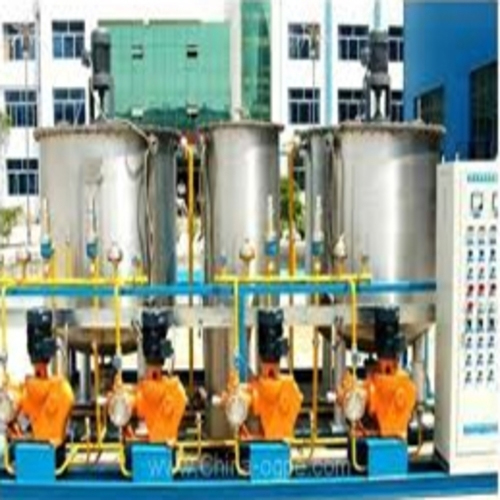Schedule a Call Back
How Solar Power Projects are Evolving in India
 Technical Articles
Technical Articles- Oct 01,13

India has become an important market for solar power developers in the last one year. Among renewable energy sources, solar energy is one of the best, and India has a lot of potential for solar power generation. One reason for this is falling prices of equipment that can generate electricity from sunlight. Another reason is government support for the development of solar power. While looking at the emerging trends in Indian solar market manufacturing of indigenous solar products is on the rise, solar grid parity getting closer, rising solar rooftop installation, declining solar photovoltaic cost to boost solar power and off-grid PV applications gaining momentum.
India is currently facing an energy crisis and at least 400 million rural residents lack access to any form of electricity and 90 million households still use kerosene to cook food and light up their homes. Shortages of coal, oil and natural gas will require India to import increasing amounts of high-cost fossil fuels, risking inflation and putting more pressure on India's yawning budget deficit.
Gujarat, one of the fastest developing states in India, has installed thousands of solar panels and has been producing electricity for almost a year. These panels make up the largest solar energy park in Asia. More than 20 international companies launched the park a year ago. It now produces 214 megawatts of power every day. In the end of 2012, states like Tamil Nadu and Andhra Pradesh had each announced policies for the allocation of 1 GW of PV projects. Allocation in Tamil Nadu were undersubscribed and a capacity of 226 MW has been allocated. In Andhra Pradesh, the allocation process was oversubscribed, but the final allocated capacity is yet to be confirmed.
In addition, towards the end of the previous quarter, project allocations were announced in the states of Uttar Pradesh for 200 MW, Punjab for 300 MW and Karnataka for 130 MW. Going forward, a capacity of 750 MW under phase two of the National Solar Mission (NSM) is expected.

According to India's Ministry of New and Renewable Energy (MNRE), the allocation process will begin this May. Combined, these new allocations are expected to account for around 2 GW of demand in the second half of 2013, and a blockbuster year for capacity addition in 2014. In the previous quarter, 226.5 MW of PV capacity was installed, taking India's total installed capacity to 1.4 GW as of March 2013. The largest capacity addition of 221.5 MW was achieved in Rajasthan, of which 183 MW is under batch two of phase one of the NSM and 38.5 MW is under the Renewable Energy Certificate (REC) mechanism.
The south Indian states of Andhra Pradesh and Tamil Nadu had announced ambitious targets for solar power installations as a means to solve the power crisis situation that exists in these states. The power deficit in the southern grid in India has gone up from 3 per cent in 2011, to 16 per cent in January 2013. Solar power is the only option for these states to get quick access to power.Kerala, another south Indian state, has also announced a solar policy in February 2013. This makes it the ninth Indian state to release a solar specific policy document. Under the draft policy, Kerala has set itself a target of an installed capacity of 500 MW by 2017, and 1,500 MW by 2030. Late last year, Kerala initiated a 10,000 rooftop solar power program.
These three south Indian states are the first in the country to have announced plans to offer net-metering to power consumers. This is a significant step forward for the Indian solar market. Until now, the Indian market has only focused on large utility-scale projects, but the new policies in these states are encouraging distributed generation that promises to provide a sustainable demand for solar and growth for the market.
Another trend that has emerged from Kerala and Tamil Nadu is that of transferring the renewable purchase obligation from power distribution companies to large power consumers. The north Indian states of Uttar Pradesh and Punjab have also initiated processes for the allocation of 200 MW and 300 MW of PV projects, respectively.
Rooftop Solar Power Gaining Momentum
In the last one year, the demand for solar rooftop installations has also gone up significantly. Earlier, the roof top solar system did not gain any sort of momentum or interest in India, because of the prohibitively high cost of solar PV and lack of government support for residential roof tops. The situation however has changed with solar cost falling consistently and government showing interest towards promoting roof top solar. Under the National Solar Mission, the government offers subsidies of 30 per cent on the plant for each household that sets up a rooftop solar system, and the ministry is gradually running out of funds allocated for giving these subsidies.
Solar power was largely seen as a decentralised, distributed ge?neration (DDG) source of po-wer. Now, to meet the targets of the solar mission, solar power plants would have to compete in size and scale with new co?al-based thermal power generation capacities and, as such, the power ministry would view this as its domain. In actuality, large-scale solar po?wer generation technologies (based on thermal as well as photovoltaic technologies) would have to be set up along with a range of DDG applications.
Solar power is obviously transforming India's energy sector and if the policy makers and regulatory bodies who are responsible for governing this sector must work in tandem and take an integrated, long-term appro?ach to the sector in order to facilitate a smooth and consistent transition in the desired direction.
Related Products

Ozone System
Omnicorp Environs & Infratech Co offers a wide range of ozone systems.

SWR ’Slipping’ Wrenches
Reliable
Trade Links offers a wide range of SWR ’slipping’ wrenches.

Gripping Systems – Rgg
Schunk Intec India Pvt Ltd offers a wide range of Gripping Systems – RGG - cleaning
device with shank interface.















